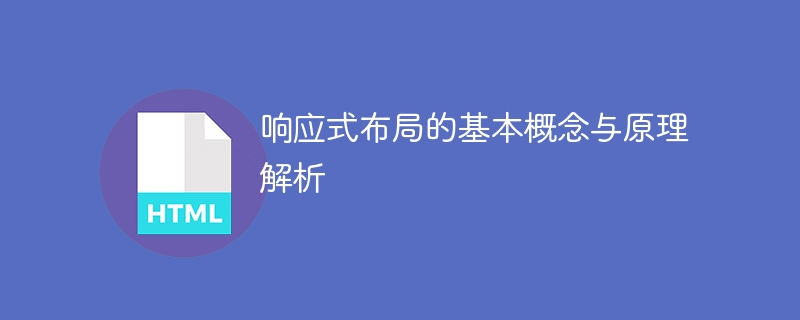

Analysis of the basic concepts and principles of responsive layout
With the popularity of mobile devices and the diversification of screens, the traditional fixed layout can no longer meet the needs of users. In this context, responsive layout (Responsive Design) came into being. Responsive layout is a web page layout method that can automatically adapt to different screen sizes and device types, allowing users to get the best browsing experience on any device.
The basic principle of responsive layout is to use CSS media queries (Media Queries) to detect the characteristics of the device, and then apply different styles to the page based on different characteristics. In practice, it is common to define a set of CSS rules for different screen sizes and device types, and use media queries to apply these rules to the page.
The following will introduce the basic concepts and implementation principles of responsive layout, and give relevant code examples.
The sample code is as follows:
@media screen and (max-width: 768px) {
/Style applied when the screen width is less than or equal to 768px/
}
@media screen and (min-width: 769px) and (max-width: 1024px) {
/When the screen width is greater than 768px and less than or equal to 1024px The style applied when the screen width is greater than 1024px/
}
By using media queries, we can apply different styles to the page according to different screen sizes, thereby achieving responsive layout.
Fluid layout and flexible layout
In responsive layout, fluid layout and flexible layout are two common layout methods.
The width of the element is adjusted as needed Adjustment, for example:
.box {
width: 50%;
}
Flexible Layout (Flexible Layout) is achieved by using the Flexible Box model (Flexible Box). The flexible box model can easily define the arrangement and alignment of elements to achieve flexible layout.
The sample code is as follows:
.container {
}
.box {
flex: 1;}
By using fluid layout and elastic layout, we can achieve adaptive and flowing effects of page elements to adapt to different screen sizes and device types.
Adaptation of images and media
In responsive layout, the adaptability of images and media elements is also an important consideration. In order to ensure that images and media elements can be displayed normally on different screens, we can use the max-width property of CSS to limit their maximum width and cooperate with media queries to adjust their size.
Summary:
Responsive layout is a web page layout method that can automatically adapt to different screen sizes and device types. It detects device characteristics by using CSS media queries and applies different styles based on the characteristics. Fluid layout and elastic layout are common responsive layout methods that can achieve adaptive and flowing effects of elements. At the same time, when designing images and media elements, we need to consider their adaptability, which is achieved by setting max-width and height:auto.
The above is the detailed content of Analyze and explain the basic concepts and principles of responsive layout. For more information, please follow other related articles on the PHP Chinese website!




